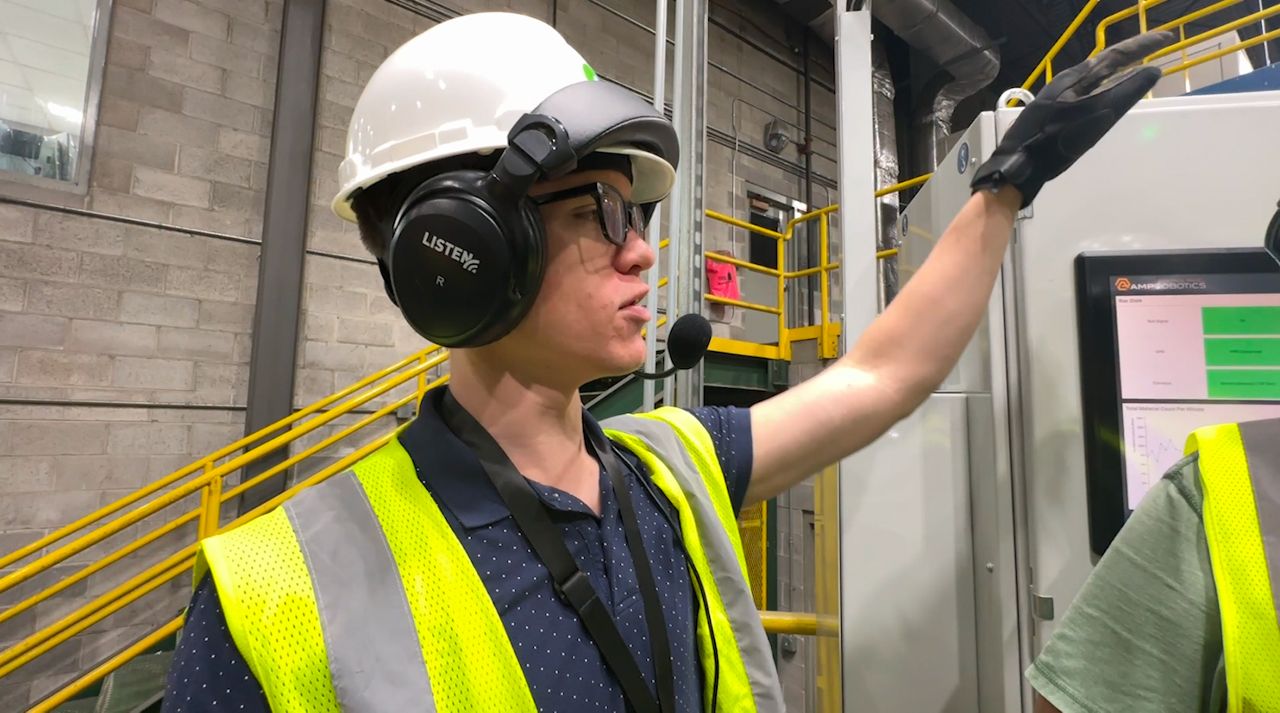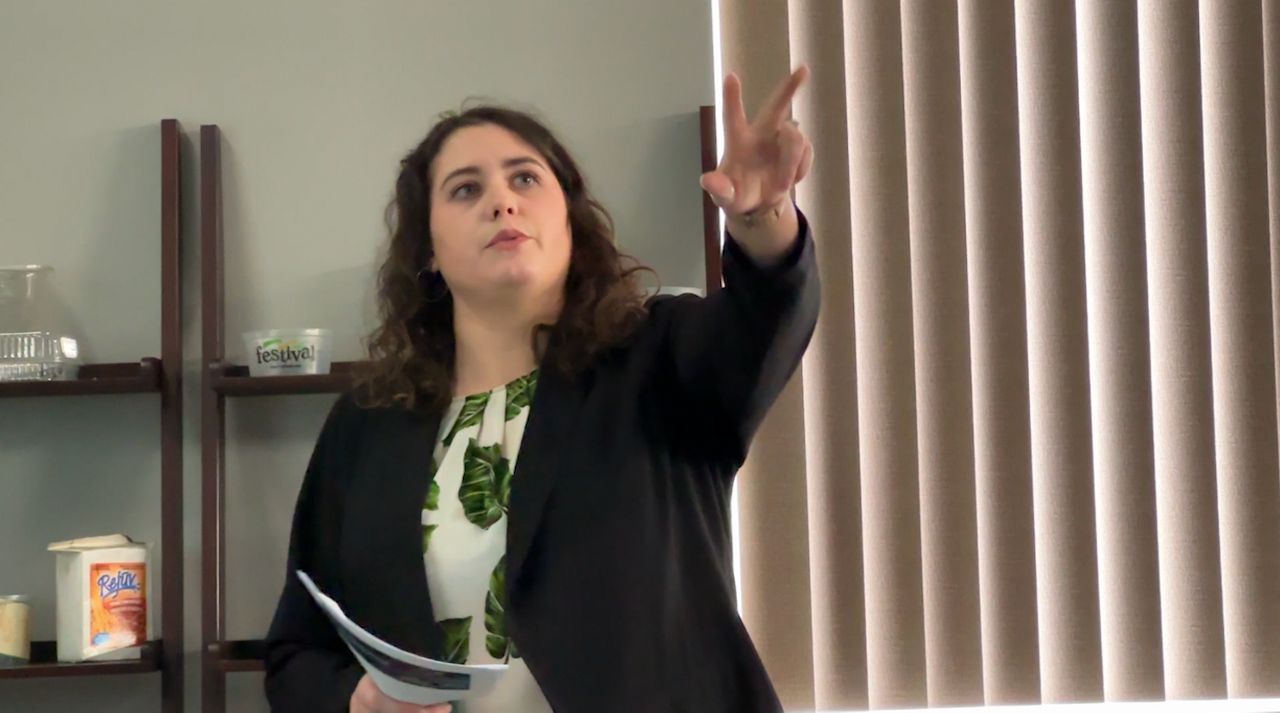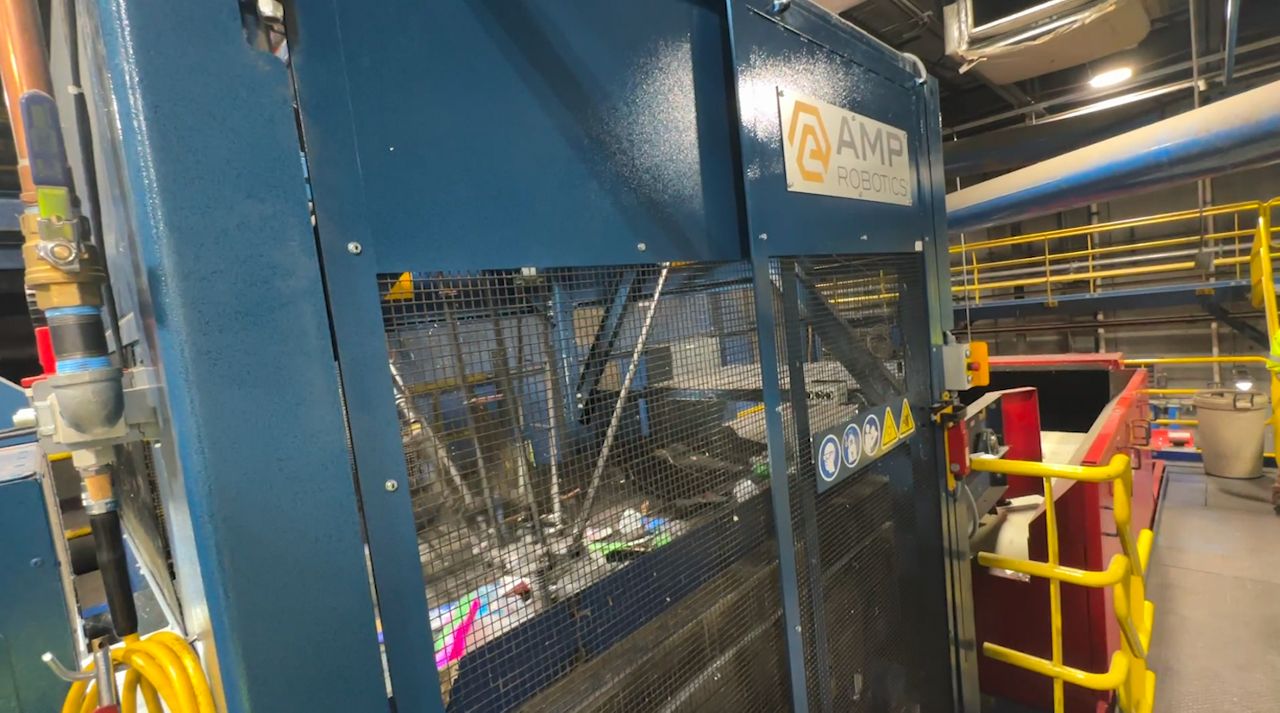LITTLE CHUTE, Wis. — About 800,000 pounds of materials are handled each day at the Materials Recovery Facility in Outagamie County.
Much of it is touched by human hands, but a large portion is now being handled by a trio of robots assisted by artificial intelligence.
“I could sit there and watch them all day, just how they move and their fluidity,” said Jordan Hiller, Outagamie County’s recycling and solid waste program coordinator. “It’s really awe-inspiring just to see how far technology has come.”
The robots were installed in November and another is expected to be added to the system.
An optical sensor and artificial intelligence are key pieces of how it all works. The equipment essentially looks for household recyclables by shapes, colors and logos.
That includes everything from dairy and laundry containers to pop bottles.
“With this machine learning we’re able to, in real time, keep up with the changing environment,” Hiller said. “If a manufacturer changes a process in how a bottle is created — or they change something in their logo or design — with AMP’s technology and their cloud-based system we’re able to monitor all of those changes and not have to retrain staff every six, eight, 10 months.”

The facility in Outagamie County handles recyclable items from Brown, Winnebago and Outagamie counties.
Recycling Superintendent Alex Nett said this technology isn’t widespread in the state.
“Not a lot of places in Wisconsin have AI technology, let alone in the recycling facility,” she said. “I think we’re maybe one of two or three. It’s really great to be an innovative leader in that sense.”
The operation works to keep items out of the landfill, while also generating a product it can sell to domestic companies who specialize in recycled materials.
“The fact we can recover more and then turn around and sell it back to market,” Nett said. “It’s recovering more in an environmental way.”

Hiller showcased the equipment to county and municipal officials from all three counties this week. He said the robots allow the facility to move humans into other areas where they are needed.
“We’re able to move and shift those people to different sides so that we’re able to clean out contamination in the paper lines,” he said. “We’re able to get cleaner commodities that we’re able to re-sell back to market at better prices.”
Officials are seeking the public’s help in finding names for the three new robots being used at the materials recovery facility. A link to submit suggestions can be found here.




